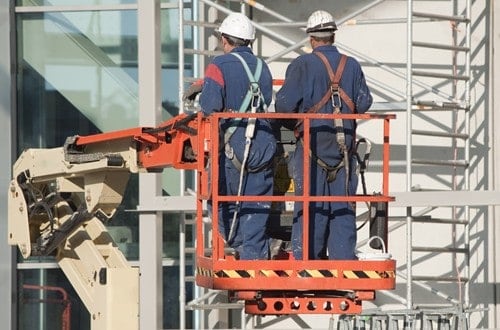The last ten years have seen a significant increase in serious forklift-related losses. Understanding how forklifts operate and the center of gravity on forklifts is critical to helping prevent workplace accidents.
Real-Life Loss Scenario
A recent policyholder loss involved a forklift rollover where the operator was on a flat surface with no load. The individual suffered fatal injuries when their head and neck area were crushed by the cage of the forklift. The operator was not wearing their seatbelt when the accident occurred. Wearing a seatbelt may have minimized the extent of driver injuries, including saving his or her life.
Forklift Safety Measures
Prior to driving a forklift, all operators must be properly trained on effective safety measures. When building a forklift safety program, training should include the basics of lift truck stability, including basic principles for picking up a load; factors impacting the stability and center of gravity for a forklift, such as the size, weight and shape and forward or backward tilt; assessing the condition and grade of surfaces on which the lift truck is operated; and understanding capacity and weight versus forklift load centers.
Do’s and Don’ts of Forklift Safety
- DO Fasten the Seat Belt
- DO Watch For “Tail Swing”
- DO Be Aware of the Forklift’s Stability
- DO Check Surface Strengths
- DO Use Caution When Crossing Slopes
- DO Reduce Speed on Rough Surfaces
- DO Avoid Off-Center Loading
- DO Avoid Slippery Surfaces
- DO Wear a Hard Hat (if recommended or required by employer or regulations)
- DO Avoid Fast Starts/Turns, Sudden Stops
- DO NOT Pick Up or Place a Load on Grades
- DO NOT Run Over Objects
- DO NOT Overload the Forklift
If a Forklift Begins to Tip Over:
- Do not jump off the forklift
- Firmly hold onto the steering wheel
- Brace your feet
- Lean away from impact
For More Information, Visit: Forklift Safety Tips | Forklift Rules Of The Road
Contact your Amerisure Risk Management Consultant to build your forklift safety training program.



